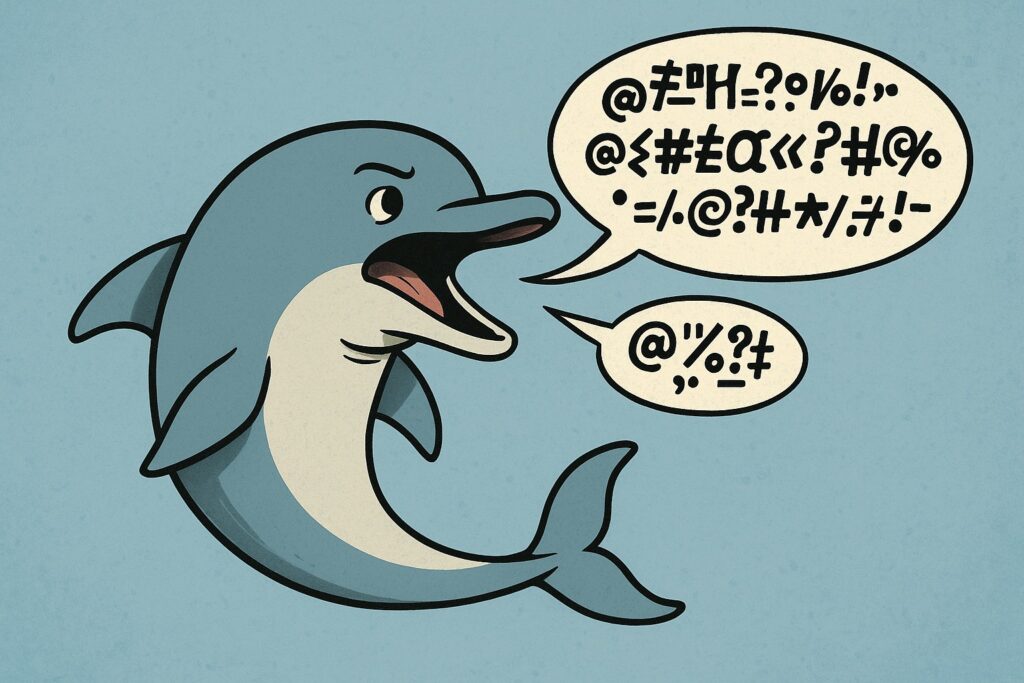Why Jargon Kills Clarity
Ever been in a conversation where the other person nods politely but clearly has no clue what you’re talking about? Odds are, you were speaking dolphin—using a language only you and a few insiders understand. And here’s the hard truth: when you do it, you’re not just confusing people, you’re undermining trust.
What “Speaking Dolphin” Really Means
I began using the term after hearing it in military and tech circles. The idea comes from Flipper, the 1960s TV show where humans somehow understood a dolphin’s squeaks and clicks. Cute on TV. Deadly in business.
When you speak in jargon, acronyms, or hyper-technical references, you might as well be squeaking. Others don’t understand, but they’ll rarely admit it. Instead, they’ll just tune out.
The fallout is immediate:
-
People feel stupid.
When they don’t recognize the terms you’re throwing around, they immediately question their own intelligence. Instead of admitting confusion, they shrink back and disengage—because nobody wants to raise their hand and say, “I have no idea what you’re talking about.” -
They feel disrespected.
Using a language they don’t understand signals you didn’t bother to consider their perspective. Whether you meant it or not, it communicates: “My time is more valuable than making sure you understand me.” That’s a fast way to erode goodwill. -
They lose confidence in you.
If they can’t follow your words, they’ll start doubting your judgment. Confusion plants seeds of mistrust: “If this person can’t explain it clearly, do they really know what they’re doing?” Clarity equals credibility; muddled language does the opposite. -
They stop listening.
Attention is a fragile resource. Once someone decides they can’t keep up, they mentally check out. And when they’re no longer listening, your big idea, pitch, or point dies on the spot.
 The Big Offenders
The Big Offenders
Here are the most common ways professionals lapse into dolphin-speak:
- Acronyms: You love them. Others don’t know them. Spell them out. Confirm understanding. Don’t assume.
- Technical Jargon: “Inside baseball” references and industry terms alienate outsiders fast. If you have to use them, explain them or provide analogies.
- Knowledge Assumptions: Just because someone nods doesn’t mean they’re tracking. Gauge knowledge early in the conversation. Ask: “Are you familiar with this term?”
- Overconfidence in Nods: People will nod to be polite. It doesn’t mean they get it. Watch reactions closely—if there’s no engagement, you’ve lost them.
How to Stop Speaking Dolphin
Most people don’t realize they’re doing it. That’s the problem. Awareness is the first—and often missing—step. If you don’t recognize that your acronyms, jargon, and insider shorthand are confusing others, you’ll keep right on doing it. Once you catch yourself, you can correct course in the moment and build trust instead of losing it.
You don’t need a translator—you need awareness.
-
Spell out acronyms. Every. Single. Time.
-
Translate jargon. Use analogies that connect with the other person’s world.
-
Confirm understanding. Respectfully ask, “Does that make sense to you?”
-
Be the bridge. If you notice others speaking dolphin, step in and clarify for the group.
-
Simplify. And no—it’s not “dumbing it down.” Forgetting your audience is what’s truly dumb.
The Bottom Line
If clarity is the goal, then awareness is the starting point. You might be fluent in your own professional language, but most people aren’t. Don’t assume they are. Translate. Simplify. Confirm.
Because the cost of speaking dolphin isn’t just confusion—it’s lost credibility. Just saying.
Want to Make Clarity a Daily Habit?
Breaking free from “dolphin-speak” requires practice, accountability, and reinforcement. That’s why we created BRIEF Team Builder—a 12-month sustainment program that helps teams build clarity into every conversation and keep it there.
Joseph McCormack first shared these ideas in his Just Saying podcast, Episode 377, You’re Speaking Dolphin.